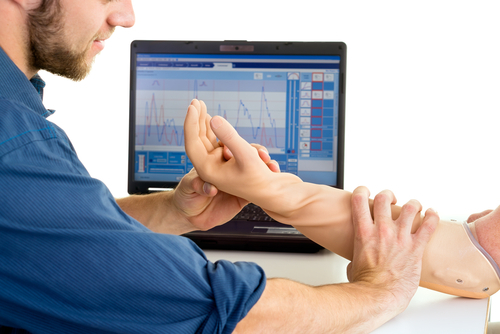New 'e-skin' brings sense of touch, pain to prosthetic hands
IANS Jun 22, 2018
A team of engineers, including one of an Indian-origin, has developed a novel e-dermis that will enable amputees perceive a real sense of touch through the fingertips of their prosthetics.

Made of fabric and rubber laced with sensors to mimic nerve endings, e-dermis recreates a sense of touch as well as pain by sensing stimuli and relaying the impulses back to the peripheral nerves. The novel e-dermis conveys information to the amputee by stimulating peripheral nerves in the arm, making the so-called phantom limb come to life. The e-dermis device does this by electrically stimulating the amputee's nerves in a non-invasive way, through the skin, said Nitish Thakor, Professor at the Johns Hopkins University in Maryland, US.
"For the first time, a prosthesis can provide a range of perceptions, from fine touch to noxious to an amputee, making it more like a human hand," Thakor added. The study, detailed in the journal Science Robotics, revealed that the e-dermis enables its user to sense a continuous spectrum of tactile perceptions, from light touch to noxious or painful stimulus.
Bringing a more human touch to modern prosthetic designs is critical, especially when it comes to incorporating the ability to feel pain, said Luke Osborn, a graduate student at the varsity. "Pain is, of course, unpleasant, but it's also an essential, protective sense of touch that is lacking in the prostheses that are currently available to amputees," Osborn explained.
The team created a "neuromorphic model" mimicking the touch and pain receptors of the human nervous system, allowing the e-dermis to electronically encode sensations just as the receptors in the skin would. They found that the test subject was able to perceive these sensations in the phantom hand. Further, in a pain-detection task, the test subject and the prosthesis were able to experience a natural, reflexive reaction to both pain while touching a pointed object and non-pain when touching a round object. This e-dermis technology could be used to make robotic systems more human, and it could also be used to expand or extend to astronaut gloves and space suits, Osborn said.
-
Exclusive Write-ups & Webinars by KOLs
-
Daily Quiz by specialty
-
Paid Market Research Surveys
-
Case discussions, News & Journals' summaries